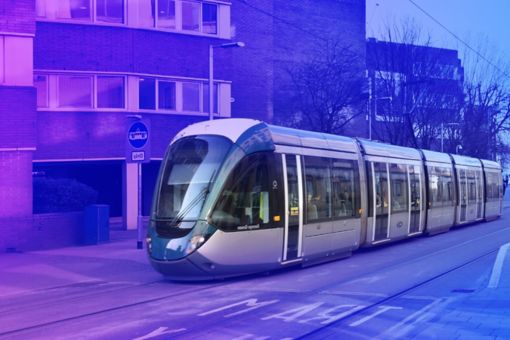Organisations across the world have ambitious strategies to decarbonise transport, the highest carbon-emitting sector globally. This is the easy part – executing the strategies is much more difficult.
In this article, I outline three key considerations for implementation, drawing on my experience helping infrastructure authorities, financiers, and operators to develop their transport decarbonisation strategies and - crucially - detailed, governance, and capability-building plans. These insights are by no means exhaustive – but are a summary of the most pervasive challenges and potential solutions I have come across in my work. I learned many of these underlying concepts during a postgraduate course centred on practising adaptive leadership, a theory pioneered by Professor Ronald Heifetz.
The decarbonisation of the transport sector – which accounts for more than a fifth of carbon emissions globally – lies at the heart of global and national ambitions to combat climate change and, reach net zero.
In the UK and the US, Transport is the highest emitting sector, accounting for almost 25% and 30% of carbon emissions respectively. Carbon data from the European Union shows that whilst emissions have reduced as a whole, and across other sectors, transport has bucked the trend – with a 7% increase between 1990 and 2020. In India it is a top-three emitter at 13%, and China accounts for almost a fifth of the world’s transportation emissions, behind only the United States. Decarbonising transport is also inextricably linked with the decarbonisation of the wider infrastructure and built environment that supports transport – for instance, construction, manufacturing, and energy.
The world over, governments, public sector agencies, and private sector organisations have announced ambitious transport decarbonisation strategies spanning a range of interventions. From 2020 to date the UK Government has released its Transport Decarbonisation Plan (in which it made a series of commitments to zero-emission technology across modes) announced a ban on the sale of new petrol and diesel passenger vehicles from 2030, and created multiple significant funding pots to support local and regional governments and the private sector participate in the transition. Meanwhile, government-owned bodies such as National Highways (which is responsible for emissions on England’s Strategic Roads Network), and Network Rail (which owns and manages the UK’s extensive rail infrastructure) have also made various commitments covering their corporate estate and supply chain. Private sector organisations (from corporations to banks to automotive manufacturers) have also announced their own plans and commitments.
However, the hard work is only just beginning. In some senses, what has been achieved so far is the easy part. The real challenge, as ever, is translating strategies into action - and, according to the Inter-governmental Panel on Climate Change (IPCC), that action needs to be “swift and drastic” in order to limit the increase in global temperatures to 1.5C above pre-industrial levels.
In this article, I highlight – with examples from my work – three major barriers to net zero action, potential lenses through which to consider these blockers, and potential solutions.
1. Net zero is not just a technical problem
Amidst the sudoku of degree-centigrade scenarios and emission baselines, and the alphabet soup of acronyms like TCFD (Taskforce for Climate-related Financial Disclosure), SBTi (the Science Based Target Initiative), and SAF (Sustainable Aviation Fuel), it’s easy to think of net zero as a set of discrete technical challenges. However, whilst there are undoubtedly technical and technological elements to the problem, this is fundamentally about deeper and wider systemic change.
Technology is part of the solution – but not a panacea in itself. For example, electrification of transport modes or the development of alternative fuels are important for the transition, but won’t get us to net zero because of their demands on the energy system and the carbon involved in manufacturing the vehicles and infrastructure required to sustain them. We need unprecedented changes to how we move ourselves and our things – more public transport, fewer personal cars, more joined-up movement of freight on road and rail, and less indiscriminate construction.
For leaders – whether they make policy, manage infrastructure, or run a business – this requires much more than a commitment to delivering technical point solutions. We have seen a tendency among some organisations to create a separate ESG or net zero team to deliver its targets. However, this results in a side-lining of the agenda. Instead, they need to be accountable for carbon, and balance it against other priorities.
Unfortunately, there is no constrained optimisation equation that can provide the answers. Leaders need to untangle a set of complex interrelationships and dependencies, through meaningful cross-stakeholder collaboration and even debate. Whilst our tendency as human beings is to constantly diffuse tension and seek harmony, leaders (and their advisors) have the responsibility to allow the tension to surface and manage it productively. Once tensions are aired and expressed, it is much easier to establish consensus - or at least a range of constructive and plausible ideas – around how, collectively, to address them.
During our work with one client on its net zero implementation plan, the leadership team initially tried to use the formal authority vested in them to define net zero targets and allocate technical interventions across departments. This is because they viewed the problem as a technical one which could be ‘solved’ in a top-down manner through a RACI matrix (a framework to determine who within an organisation should be Responsible/Accountable/Consulted/Informed for or about various activities). However, this approach made both the managers and staff of individual departments reluctant to accept their responsibilities. Within this organisation, the interventions eventually had to be deliberated, and existing roles and mindsets challenged, in a series of cross-department workshops – which took time and energy but resulted in much greater buy-in.
2. Change need not equal loss
Climate action can come with deep existential uncertainty because organisations and people feel that they have too much to lose – business models, income streams, profits, security, and sometimes even their values. This manifests itself at every level. In policy, there is a reluctance to advocate strongly for modal shift in the fear of losing voters. In infrastructure delivery, there is a hesitation to prioritise ‘no build’ solutions which, according to PAS 2080 and other carbon management standards, are the most effective way to reduce emissions. And at an individual level, civil engineers are often concerned at the prospect of less infrastructure being built, or manufacturers of fewer vehicles being bought.
We’ve learnt that as advisors we have to help our clients manage this through real empathy – first listening to their fears and diagnosing the losses they think they are likely to face instead of jumping to solutions. Sometimes senior leaders who see lack of awareness as the main barrier for action have asked us to develop ‘carbon literacy training’ for their staff which ‘explains’ concepts like carbon neutrality or climate risk. But, instead, we’ve encouraged them to take a step back and try to understand the inherent biases that may be inhibiting them and their staff, from taking meaningful action. This can help unlock more meaningful approaches than one-size-fits-all and sometimes counterproductive technical training.
For instance, when managing the existential that organisations and people face, it’s important to point out that change can be a good thing. Even if we need to build fewer physical assets in the future, we will need digital tools to better manage the existing ones as we’re seeing from the growth of digital twins (a virtual model that simulates physical systems and can reduce carbon by optimising the design and construction process.) Similarly, value pools may shift in the automobile industry towards as-a-service models and more digitalisation.
Of course, to meaningfully assuage people’s concerns, organisations and governments have to invest in concerted upskilling programmes that prepare them for change. For example, we are currently working with a major funder and subnational government to build a mobility skilling centre that can enable the transition and help reduce the anxiety that stakeholders across the electric mobility value chain are feeling.
3. Navigating uncertainty requires flexibility and innovative first-principle thinking
No one has ever done this before. Therefore, no organisation has all the information they need to take decisions on how, when and where to reduce carbon. Leaders are reluctant to take decisions on reducing carbon because they don’t believe they have the data they need. For example, infrastructure organisations don’t know how to baseline their suppliers’ emissions, charging infrastructure providers don’t know how to predict utilisation of chargers in 2030, and the government doesn’t know whether to back electric or hydrogen heavy goods vehicles (HGVs).
Unfortunately, we don’t have the luxury of time because we are 5 years 11 months away from exhausting the earth’s carbon budget that will keep global temperature rise to 1.5 degrees. This means combating analysis paralysis, realising that we can’t let the perfect be the enemy of good, and getting more comfortable with uncertainty.
A flexible outcome-based approach to decision-making is the only way to tackle this daunting uncertainty. For infrastructure organisations, this might mean developing baselines based on high-level benchmarks and then iterating it periodically with as-built carbon data. Charging infrastructure providers need to build financial models with utilisation as a key sensitivity and vary their internal rates of return based on the risk of a lower-than-anticipated utilisation rate. The government can adopt a scenario-based roadmap for HGVs clearly outlining how policy decisions may change based on technology development.
Another useful approach that we have taken with a client who wanted us to develop a climate-focused future transport strategy is that of ‘visioning and back-casting’. Instead of forecasting what the future would look like based on current trends and forecasts, we developed a perfect end vision of a net zero state in 2050 and worked backwards from there to articulate what needs to happen (within the system and our client’s organisation) in 2040, 2030, and 2025. This helped unshackle our thinking from current challenges and uncertainties.
Trying to effect systemic change of this scale and complexity can often feel slow, political, and emotionally taxing. In fact, this may be amongst the most challenging work that we, as policymakers, engineers, leaders, managers, advisors, will ever engage with during our careers.
This is also amongst the most important and exciting work we will ever do - a chance to play a part in something that really matters, to nations, communities and the planet.
And the good news is that, despite the urgency, the window for sustained and meaningful action is still open…



